Growing up in rural Illinois, Holly Spangler always thought that she wanted to be a GP.
“So I got to college and I was about six weeks into chemistry and I was like: ‘Yeah, this isn’t it,’” she laughs. “‘This is not what I was made to do here.’”
Fortunately, a conversation with a friend helped Holly find her true calling; though it turned out that the seed had actually been sown long before on her family farm.
“My dad had a bumper sticker on his farm pick-up that said, ‘Beef: it’s what’s for dinner’, and that was kind of the slogan for the National Beef Association at that point in the ’90s. And I always thought that was interesting. Who came up with that and how did they get it on a bumper sticker and how did they get it on my dad’s truck in southern Illinois? And my friend was like: ‘Oh that’s ag communications,’” explains Holly.
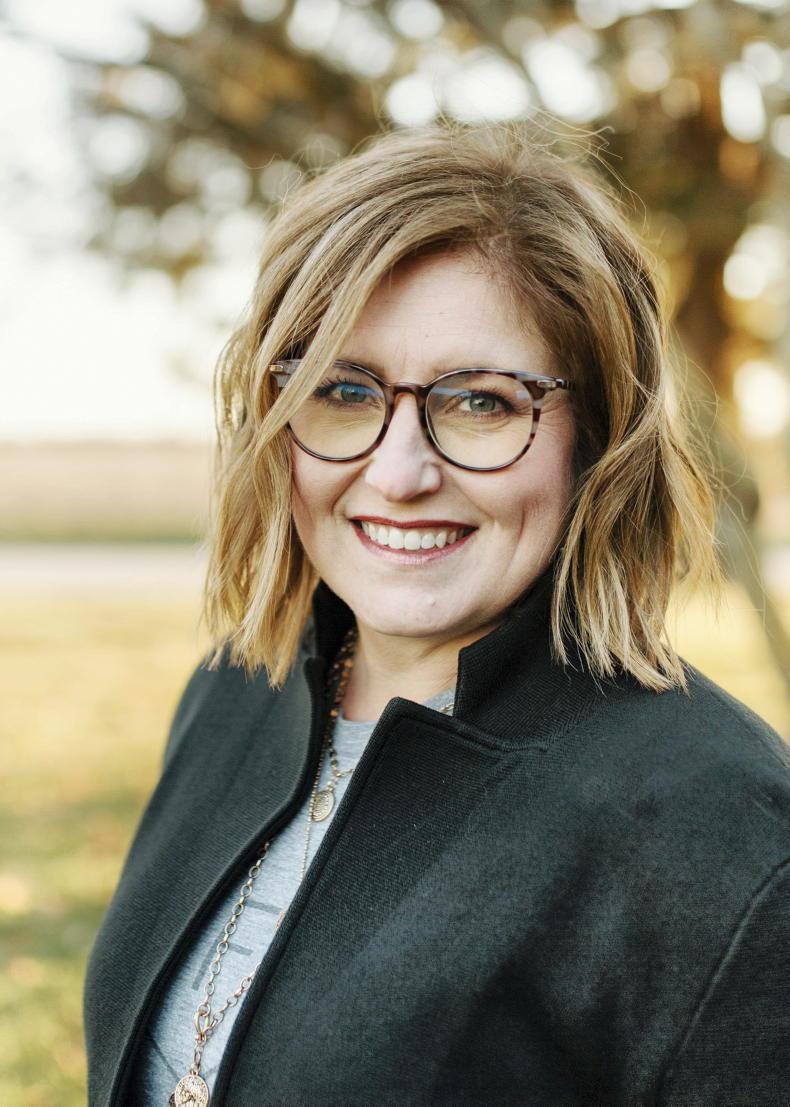
US agri-journalist Holly Spangler.
“I remember thinking: ‘This is it for me.’”
Making headlines
No doubt about it. Holly’s decision to major (specialise) in agricultural communications has led to a 25-year career in the industry, and her current role as editor of Prairie Farmer, which is a weekly newspaper covering all matters agricultural in Illinois since 1841. A job she balances alongside her role on a 2,500 acre corn, soybean and beef cattle farm, where she lives with her husband John and their three children, Jenna (19), Nathan (17) and Caroline (12).
The Spanglers live near Marietta in Fulton County and from the beginning of her career as a field editor, she has worked remotely.
“They took a chance and they said: ‘I think it’s worth it to us to have a field editor who is on a farm,” says Holly, who in addition to working up to the role of editor of Prairie Farmer – the second female to do so – is also an executive editor for Farm Progress, the company that owns the newspaper, along with a range of publications.
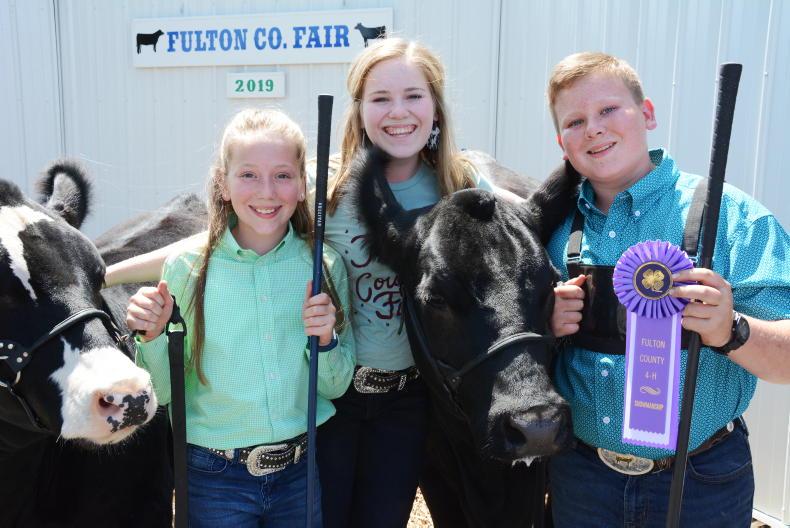
Holly's children are involved in showing pedigree cattle
Reflecting on her career, she says the biggest ongoing story has been the development of biotechnology. In 2022, however, it’s no surprise to learn that the hot topic is inflation.
“Fertiliser and diesel prices are incredibly high right now and will be as we go through our biggest season of harvest here,” says Holly, who explains that diesel is up about $2 a gallon compared to last year, averaging nationwide at around $5.49, while anhydrous ammonia – a form of nitrogen that a lot of farmers in the northern half of the Midwest put on in autumn- has risen from $750/ton in autumn 2021 to $1,180/ton in autumn 2022.
In terms of climate conversation, changes in rainfall patterns in Illinois are in the news, while policy-wise, all eyes are on the challenge to Proposition 12, which is California’s animal welfare housing law that defines the minimum amount of space that farmers must give to cows, pigs, and chickens who are held in confinement. This will come before the Supreme Court this autumn.
“That is a proposition that California voters passed a couple of years ago that said meat, such as pork, that is to be sold in California has to be grown according to their standard, so a certain-sized barn, certain-sized pens,” says Holly, who explains that this would mean that farmers would have to retrofit their barns and build new facilities.
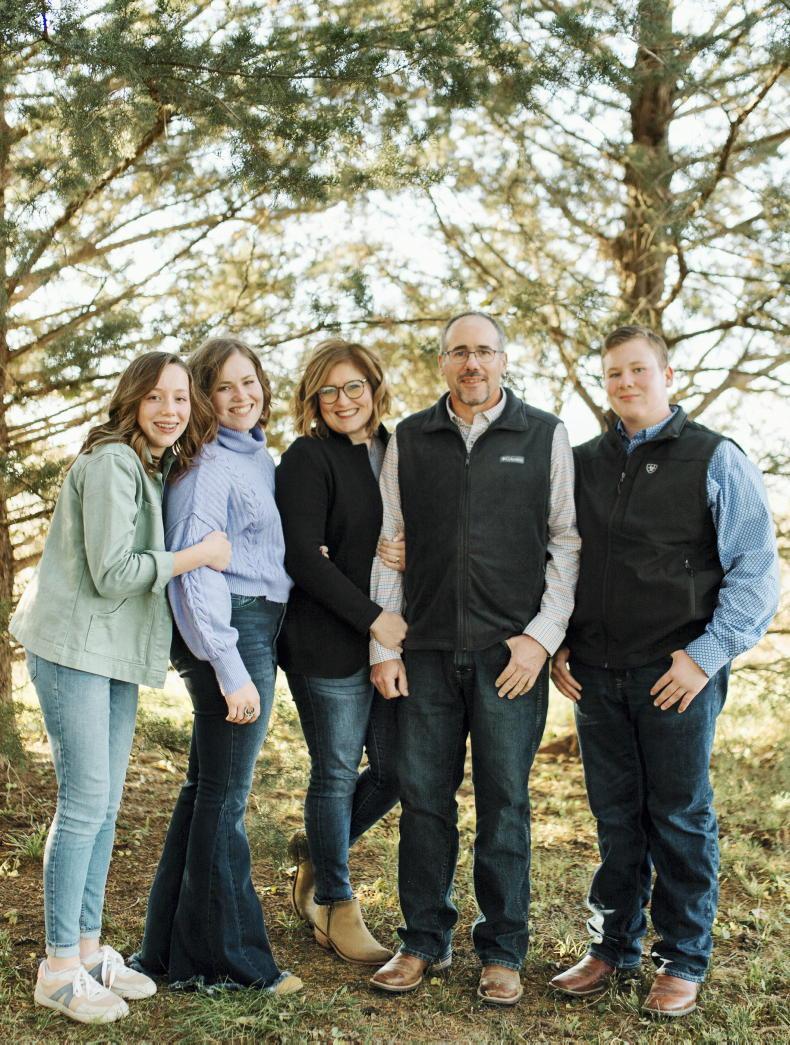
Holly Spangler pictured with her husband John and their children Jenna, Nathan and Caroline
“All these things that nobody really has money for and might cause a whole lot of people to say: ‘Well forget it, I won’t raise hogs anymore’ or ‘I’ll focus on another crop’. And it also raises big questions about what we call inter-state commerce,” she continues.
“Basically there would be one set of standards for anything going into California and one set for the rest of the country and the rest of the world, which doesn’t work real well.”
Home farm
Away from the news beat, however, is the business of the fourth-generation family farm.
Of the 2,500 acres, 2,000 are spilt between commercial soybeans and corn. September sees the start of harvest, which Holly predicts would take five weeks if there were no interruptions due to weather or machinery breakdowns.
“But in reality, it will end up being more like six to eight weeks,” she says, with the crops then shipped to a nearby river terminal.
“From there, they will go on a barge and very likely go around the world and that’s our proximity to the Mississippi River.”
In recent years, a fungal disease known as tar spot that affects corn has been a concern, but so far this year it has not had the same impact. Prices, she says, “have been really good”, at a little over a dollar higher than last year ($7.37/bushel of corn in June 2022 compared to $6 in June 2021).
But?
“The hard part is the inputs are really high too, right?” Holly highlights.
As well as tillage, they raise beef cattle, with a mostly Simmental-Angus cross herd.
“We do what’s called cow-calf production,” says Holly.
“We run about 125 head of cows and we breed the cows and we raise those calves through the summer time. In the fall we’ll wean those calves and we will feed them to a certain weight and then they will be sold. We will sell them in a local sale, and then they will go to a feed yard, where they will be finished and slaughtered for beef.”
Holly says the cattle market has been strong (the average price on feeder steers in Illinois in July 2022 was $1.56 a pound), but that the ongoing drought in the west of the country is set to cause “a big hiccup in the system”.
“So the cattle market is about to see some real repercussions from that because people are selling off cows and liquidating herds,” she explains.
“We have a friend that owns a sale barn locally and he was pointing back to 2012, which was the last time we had such a tremendous drought that affected the cattle market that way and that saw such a selloff and he said you saw a pretty good bump for a couple of years and then everybody gets back in and that tanks the prices again. So we’ll just have to see what happens. Markets and trade, all those things in general, they like certainty. And this is not that.”
Future of farming
The Spangler children are involved in showing pedigree Simmental cattle, taking after their parents.
“My husband and I both grew up showing cattle,” says Holly. “I was raised on a Shorthorn farm in southern Illinois, which has Irish and Scottish roots. And a bit of trivia, I was the Shorthorn Lassie Queen back in the day!”
While Holly and John’s goal has always been “to create opportunity” for all of their children, no matter what their passion, of the three, Nathan sees his future in farming.
“We’re trying to figure out right now, well what does that look like for him? What education does he need in order to be equipped to be a farmer going forward in times like this,” says Holly, who adds that while farming is not her daughters’ passion, there has been a 27% increase in females in agriculture across the US.
“Technology I think has helped a lot, but young women saying: ‘Hey, I want to farm, I don’t need to marry someone to do that.’ And there’s nothing wrong with the farm wife title but you can also be a farmer in your own right.”
As for the future, despite the many challenges, Holly believes that the same thing keeps most family farms going.
“I think we as farmers are optimistic in nature in general and optimism is the hope that things will be better,” she surmises.
“It’s optimism that the seed we put out there in the spring is going to grow and that that calf is going to produce hamburgerS for some family somewhere. And that’s why we keep at it.”
You can follow Holly Spangler’s work at www.farmprogress.com/author/Holly-Spangler
Read more
‘People sometimes stop me when out and about asking, ‘Are you that cowgirl?!’’
Growing up in rural Illinois, Holly Spangler always thought that she wanted to be a GP.
“So I got to college and I was about six weeks into chemistry and I was like: ‘Yeah, this isn’t it,’” she laughs. “‘This is not what I was made to do here.’”
Fortunately, a conversation with a friend helped Holly find her true calling; though it turned out that the seed had actually been sown long before on her family farm.
“My dad had a bumper sticker on his farm pick-up that said, ‘Beef: it’s what’s for dinner’, and that was kind of the slogan for the National Beef Association at that point in the ’90s. And I always thought that was interesting. Who came up with that and how did they get it on a bumper sticker and how did they get it on my dad’s truck in southern Illinois? And my friend was like: ‘Oh that’s ag communications,’” explains Holly.

US agri-journalist Holly Spangler.
“I remember thinking: ‘This is it for me.’”
Making headlines
No doubt about it. Holly’s decision to major (specialise) in agricultural communications has led to a 25-year career in the industry, and her current role as editor of Prairie Farmer, which is a weekly newspaper covering all matters agricultural in Illinois since 1841. A job she balances alongside her role on a 2,500 acre corn, soybean and beef cattle farm, where she lives with her husband John and their three children, Jenna (19), Nathan (17) and Caroline (12).
The Spanglers live near Marietta in Fulton County and from the beginning of her career as a field editor, she has worked remotely.
“They took a chance and they said: ‘I think it’s worth it to us to have a field editor who is on a farm,” says Holly, who in addition to working up to the role of editor of Prairie Farmer – the second female to do so – is also an executive editor for Farm Progress, the company that owns the newspaper, along with a range of publications.

Holly's children are involved in showing pedigree cattle
Reflecting on her career, she says the biggest ongoing story has been the development of biotechnology. In 2022, however, it’s no surprise to learn that the hot topic is inflation.
“Fertiliser and diesel prices are incredibly high right now and will be as we go through our biggest season of harvest here,” says Holly, who explains that diesel is up about $2 a gallon compared to last year, averaging nationwide at around $5.49, while anhydrous ammonia – a form of nitrogen that a lot of farmers in the northern half of the Midwest put on in autumn- has risen from $750/ton in autumn 2021 to $1,180/ton in autumn 2022.
In terms of climate conversation, changes in rainfall patterns in Illinois are in the news, while policy-wise, all eyes are on the challenge to Proposition 12, which is California’s animal welfare housing law that defines the minimum amount of space that farmers must give to cows, pigs, and chickens who are held in confinement. This will come before the Supreme Court this autumn.
“That is a proposition that California voters passed a couple of years ago that said meat, such as pork, that is to be sold in California has to be grown according to their standard, so a certain-sized barn, certain-sized pens,” says Holly, who explains that this would mean that farmers would have to retrofit their barns and build new facilities.

Holly Spangler pictured with her husband John and their children Jenna, Nathan and Caroline
“All these things that nobody really has money for and might cause a whole lot of people to say: ‘Well forget it, I won’t raise hogs anymore’ or ‘I’ll focus on another crop’. And it also raises big questions about what we call inter-state commerce,” she continues.
“Basically there would be one set of standards for anything going into California and one set for the rest of the country and the rest of the world, which doesn’t work real well.”
Home farm
Away from the news beat, however, is the business of the fourth-generation family farm.
Of the 2,500 acres, 2,000 are spilt between commercial soybeans and corn. September sees the start of harvest, which Holly predicts would take five weeks if there were no interruptions due to weather or machinery breakdowns.
“But in reality, it will end up being more like six to eight weeks,” she says, with the crops then shipped to a nearby river terminal.
“From there, they will go on a barge and very likely go around the world and that’s our proximity to the Mississippi River.”
In recent years, a fungal disease known as tar spot that affects corn has been a concern, but so far this year it has not had the same impact. Prices, she says, “have been really good”, at a little over a dollar higher than last year ($7.37/bushel of corn in June 2022 compared to $6 in June 2021).
But?
“The hard part is the inputs are really high too, right?” Holly highlights.
As well as tillage, they raise beef cattle, with a mostly Simmental-Angus cross herd.
“We do what’s called cow-calf production,” says Holly.
“We run about 125 head of cows and we breed the cows and we raise those calves through the summer time. In the fall we’ll wean those calves and we will feed them to a certain weight and then they will be sold. We will sell them in a local sale, and then they will go to a feed yard, where they will be finished and slaughtered for beef.”
Holly says the cattle market has been strong (the average price on feeder steers in Illinois in July 2022 was $1.56 a pound), but that the ongoing drought in the west of the country is set to cause “a big hiccup in the system”.
“So the cattle market is about to see some real repercussions from that because people are selling off cows and liquidating herds,” she explains.
“We have a friend that owns a sale barn locally and he was pointing back to 2012, which was the last time we had such a tremendous drought that affected the cattle market that way and that saw such a selloff and he said you saw a pretty good bump for a couple of years and then everybody gets back in and that tanks the prices again. So we’ll just have to see what happens. Markets and trade, all those things in general, they like certainty. And this is not that.”
Future of farming
The Spangler children are involved in showing pedigree Simmental cattle, taking after their parents.
“My husband and I both grew up showing cattle,” says Holly. “I was raised on a Shorthorn farm in southern Illinois, which has Irish and Scottish roots. And a bit of trivia, I was the Shorthorn Lassie Queen back in the day!”
While Holly and John’s goal has always been “to create opportunity” for all of their children, no matter what their passion, of the three, Nathan sees his future in farming.
“We’re trying to figure out right now, well what does that look like for him? What education does he need in order to be equipped to be a farmer going forward in times like this,” says Holly, who adds that while farming is not her daughters’ passion, there has been a 27% increase in females in agriculture across the US.
“Technology I think has helped a lot, but young women saying: ‘Hey, I want to farm, I don’t need to marry someone to do that.’ And there’s nothing wrong with the farm wife title but you can also be a farmer in your own right.”
As for the future, despite the many challenges, Holly believes that the same thing keeps most family farms going.
“I think we as farmers are optimistic in nature in general and optimism is the hope that things will be better,” she surmises.
“It’s optimism that the seed we put out there in the spring is going to grow and that that calf is going to produce hamburgerS for some family somewhere. And that’s why we keep at it.”
You can follow Holly Spangler’s work at www.farmprogress.com/author/Holly-Spangler
Read more
‘People sometimes stop me when out and about asking, ‘Are you that cowgirl?!’’








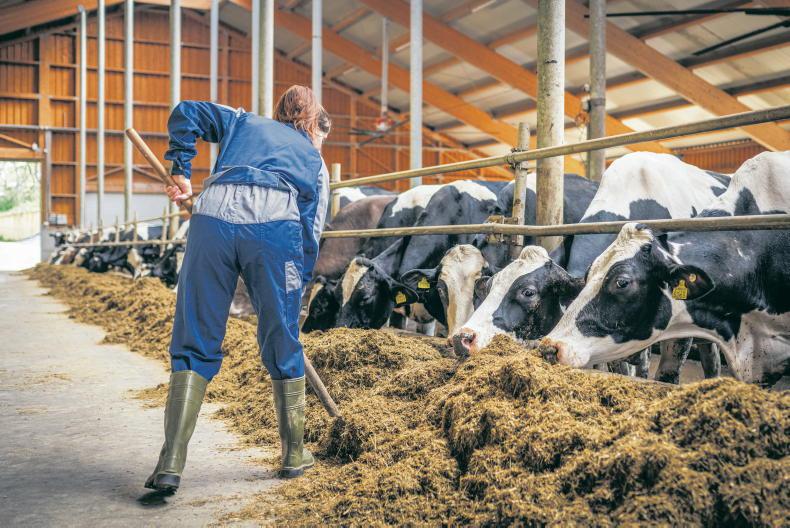

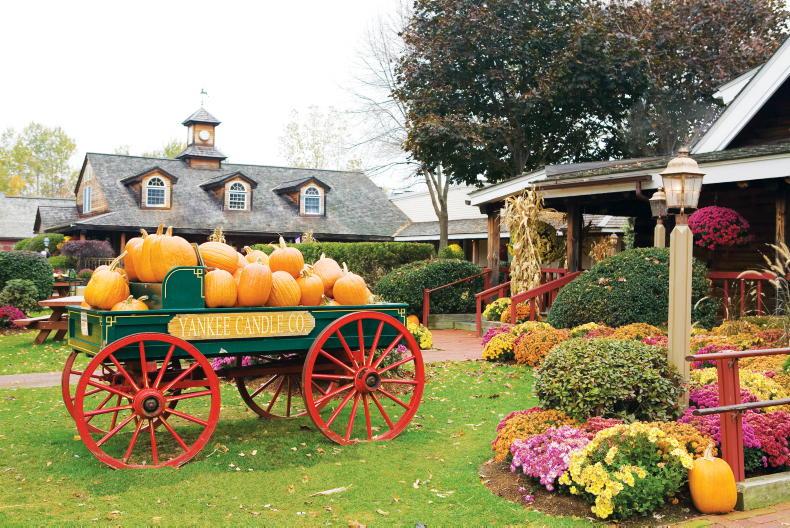
SHARING OPTIONS